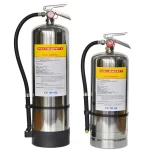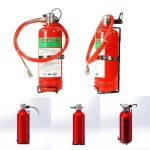When it comes to managing kitchen fires, especially those caused by cooking oils and greases, having the right fire protection is crucial. Class K fire extinguishers are specifically designed to combat fires fueled by cooking oils, fats, and grease, which can escalate quickly and become extremely dangerous. This article will provide you with essential information about Class K fire extinguishers, their function, effectiveness, and how to use them safely. Understanding these factors will enable you to prepare your kitchen adequately and ensure safety during cooking activities. Let’s dive deeper into the specifics of Class K fire extinguisher to ensure you are well-informed and ready for any situation.
Understanding Class K Fires
What is a Class K Fire?
Class K fires primarily occur in commercial kitchens but can happen in home kitchens where cooking oils and fats are used. These fires ignite when cooking oil reaches its flashpoint, making it highly flammable. Foods that contain oils, such as fried chicken, french fries, and other fried delicacies, can also trigger these fires when oil spills over or when a pan is left unattended. Factors such as overheating oil, splattered grease, or even just a sudden ignition when food is added can quickly turn an ordinary cooking scenario into a dangerous situation. Recognizing the types of materials that lead to these fires is essential for understanding the importance of having a suitable fire extinguisher at hand. Awareness plays a crucial role in prevention.
The Dangers of Grease Fires
Grease fires can be particularly hazardous. They generate extreme heat and can easily spread to nearby combustible materials, such as kitchen towels, wooden cutting boards, or even the cabinetry surrounding the cooking area. When grease is heated, it can produce flames that shoot several feet high, making it hard to combat with standard fire extinguishers. These fires can double in size in just seconds, which emphasizes the need for a quick and effective response. Additionally, the smoke produced by burning grease can be toxic, adding to the danger. Understanding the nature of Class K fires can help you react appropriately in high-pressure situations. Both prevention and effective response are key components in managing fire risk within the kitchen.
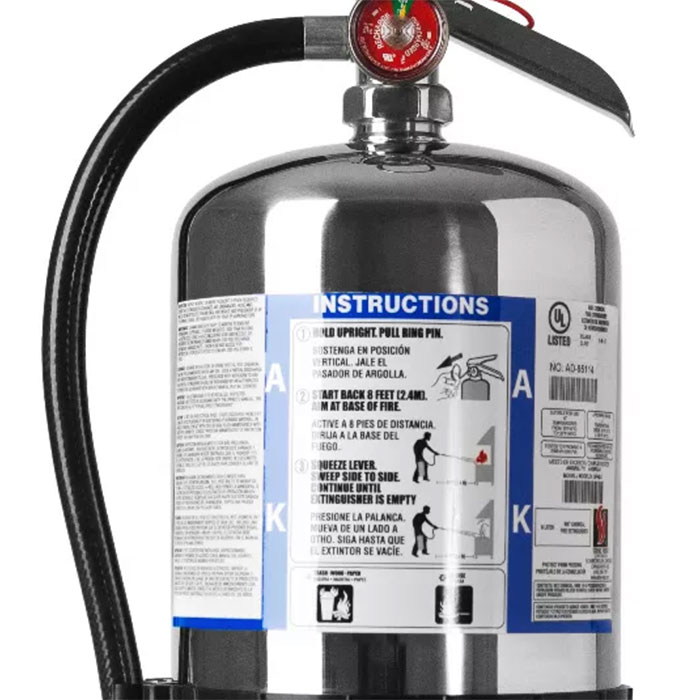
The Function of Class K Fire Extinguishers
How Class K Extinguishers Work
Class K fire extinguishers contain specially formulated agents designed to handle kitchen grease fires effectively. These extinguishers typically use a wet chemical solution that reacts with the burning grease to create a thick, soapy foam layer. This foam smothers the flames while cooling the burning material, effectively preventing re-ignition. The chemical reaction from the wet agent helps to absorb considerable heat, creating a safer environment to combat the fire. Unlike water, which might spread the burning grease and worsen the situation, wet chemical solutions do not react aggressively with the fuel, making them much safer and more effective for grease fires. This design is critical; having the right equipment can make a significant difference in managing a kitchen fire.
Advantages Over Other Extinguishers
Using a Class K fire extinguisher rather than a traditional water or foam extinguisher is crucial for ensuring safety during a grease fire. Water can cause the burning oil to splatter, which leads to a greater spread of the fire and can result in severe injuries. Additionally, foam extinguishers may not adequately suppress the fire or prevent re-ignition, especially if they are not specifically designed for grease fires. Class K extinguishers are designed to tackle these unique challenges with focused and specialized solutions. Aside from their efficacy, these extinguishers also enhance user confidence, allowing individuals to tackle small grease fires effectively rather than resorting to calling for help immediately. Knowing the advantages of Class K extinguishers encourages individuals to work toward fire safety.
Specifications and Ratings
Understanding Ratings
When selecting a Class K fire extinguisher, pay attention to the rating and specifications indicated on the label. The rating typically consists of a number followed by the letter “K,” signifying the extinguisher’s effectiveness against cooking oil and grease fires. For instance, a rating of 1K means the extinguisher is tested to extinguish a fire comparable to 1 liter of cooking oil. This rating provides a benchmark to assess the extinguisher’s capacity to handle grease fires effectively. It’s also important to keep in mind that different manufacturer ratings might include additional operational characteristics, so always check the specific details on each model. Look for extinguishers rated 2K or higher for home use, as they provide adequate fire-fighting capacity for typical household fires involving cooking.
Size Considerations
Class K fire extinguishers come in various sizes, allowing you to select one based on your kitchen’s needs. Smaller extinguishers are generally more portable and suitable for home kitchens, providing an immediate response to fire risks. A 2.5-gallon Class K extinguisher is common in residential settings, offering ample extinguishing agent without being overly cumbersome. On the other hand, larger units may be necessary in commercial kitchens where larger quantities of cooking oil are regularly used or where simultaneous frying is prevalent. In food service establishments, you may even find multiple extinguishers situated throughout the area to maximize safety. Assess the frequency of cooking activities and the cooking appliances in your kitchen when deciding on the size of your extinguisher. A good fit ensures you’ll have the right resource at hand when needed the most.
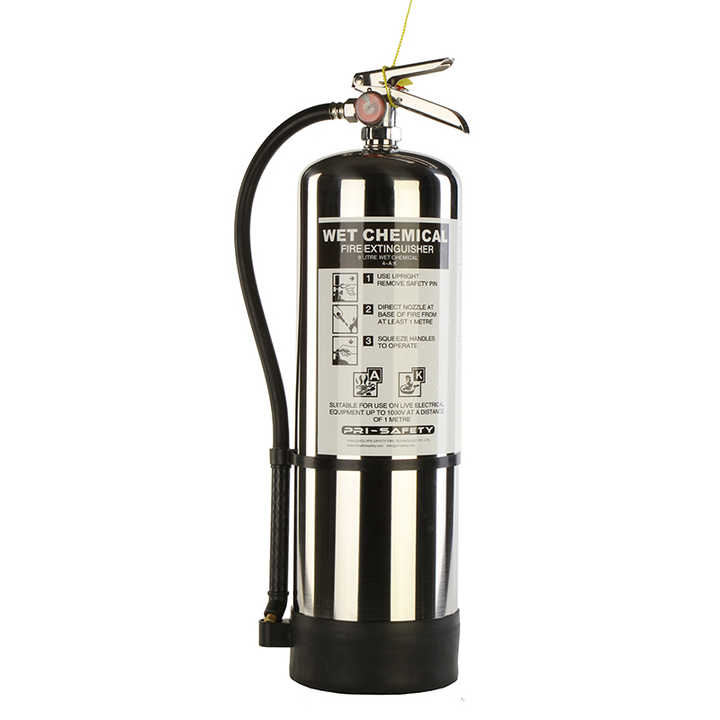
Where to Place Class K Fire Extinguishers
Optimal Locations
Location matters when it comes to placing Class K fire extinguishers. Ideally, you should keep an extinguisher within easy reach in your kitchen, close to the cooking area but away from direct flames or heat sources. Common practice is to mount the extinguisher near exits, ensuring you can access it quickly while keeping a safe distance from the fire. This planning allows you to grab the extinguisher without putting yourself in harm’s way. Additionally, consider placing an extinguisher in areas like near deep fryers or stovetops, where grease fires are more likely to occur. In larger kitchens, assess potential risk zones and adjust placements accordingly to enhance safety.
Visibility and Accessibility
Ensure your Class K fire extinguisher is easily visible and marked with a label indicating its purpose. Consider using signage to guide family members and guests to the extinguisher’s location, especially in larger kitchens. If your kitchen has multiple levels or doors leading outside, consider having separate extinguishers on each level to ensure accessibility regardless of where the fire occurs. A well-placed extinguisher enhances your preparedness and enables you to react quickly in case of an emergency. Moreover, make it a habit to train household members in locating extinguishers and how to operate them during moments of stress and confusion. Prompt accessibility could be what saves lives during a fire emergency.
Maintenance and Inspection
Regular Inspections
Maintaining your Class K fire extinguisher is critical for ensuring that it operates effectively when needed. Cheking it at least once a month is crucial. During these checks, make sure the pressure gauge is within the green zone to confirm that it is fully charged and operational. Examine the body for any signs of rust, corrosion, or damage, especially after exposure to the kitchen environment where steam and oils can accumulate. It’s also essential to ensure that the pin securing the extinguisher is intact and that the nozzle is clear of obstructions. A comprehensive monthly inspection prepares you for emergencies while prolonging the lifespan of the extinguisher. Don’t overlook this vital maintenance routine.
Professional Servicing
In addition to regular inspections, consider scheduling professional servicing for your Class K fire extinguishers annually or according to local regulations. Professionals will check the extinguisher’s pressure, test its effectiveness, and replace any worn-out or damaged components as needed. This thorough maintenance ensures the extinguisher remains operational and effective during emergencies, giving you peace of mind. Keeping a record of servicing dates and inspection results can help you track and maintain your equipment’s status. If you own a commercial kitchen, familiarize yourself with local fire safety regulations to ensure compliance and optimal safety measures.
Educating Your Household
Fire Safety Awareness
Educating everyone in your household about the dangers of grease fires is crucial for preparing for emergencies. Hold regular discussions to inform your family members about the specific risks associated with cooking oils. It is also important to emphasize the correct use of fire extinguishers. Teaching them about potential fire hazards while cooking can lead to preventative measures. These measures include maintaining a clean cooking area and ensuring cooking methods that pose less risk. Encouraging open conversations about fire safety fosters a culture of preparedness within the home.
Practical Training
In addition to discussing safety, consider conducting practical fire safety drills. Show family members how to use the extinguishers properly, emphasizing the use of the PASS technique: Pull the pin, Aim low, Squeeze the handle, and Sweep side to side. Familiarity breeds confidence; practicing can help ensure that everyone can act without hesitation in an emergency. Regular training sessions help reinforce good habits and increase overall safety in the kitchen. You can also simulate fire scenarios to provide hands-on experiences without posing any real dangers, helping everyone to feel more comfortable when faced with an actual fire.
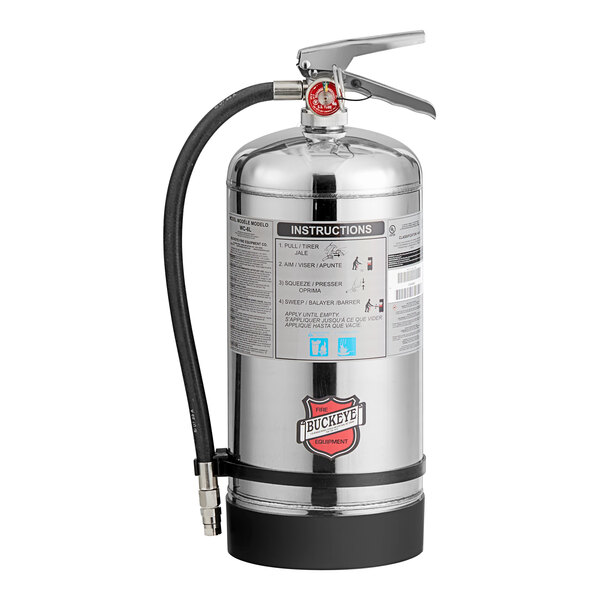
Prepared for Grease Fires
In conclusion, a Class K fire extinguisher is an essential safety tool for any home that involves cooking, particularly in kitchens where frying or high-heat cooking methods are frequent. Grease fires can erupt unexpectedly, posing significant risks to life and property. By understanding the nature of Class K fires, the functionality of Class K extinguishers, and how to maintain them, you can effectively safeguard your kitchen and household. Diligence in preparation can make a significant impact during emergencies.
Ensuring proper placement, regular inspections, and educating your family about the dangers of grease fires will help create a safer cooking environment. Take the necessary steps today to prepare your kitchen for fire emergencies. By doing so, you can enjoy your cooking experiences with peace of mind. You will know you have the right equipment and knowledge to handle potential fire hazards. Your awareness and preparedness can make all the difference in protecting your home and loved ones from dangers posed by grease fires. Practicing fire safety and maintaining proper extinguishing equipment is essential. This ensures that a potentially dangerous cooking scenario does not turn into a devastating household incident. Understanding and utilizing Class K fire extinguishers is vital for effective fire safety management. This applies whether in a home kitchen or a commercial setting.

